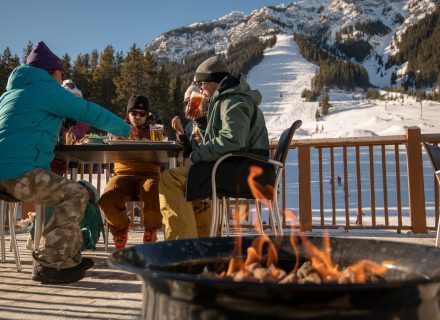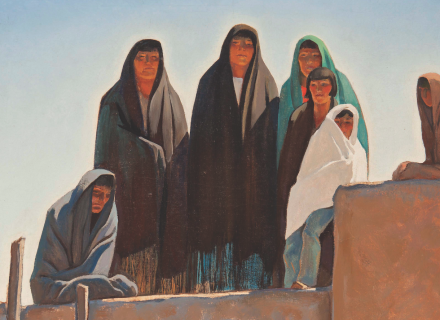Winslow Homer and Frederic Remington might seem like an unexpected pairing for a major art exhibition. Homer is perhaps best known for dramatic seascapes and compelling paintings of the Eastern Seaboard, while Remington is indelibly linked to the American West. However, both may be pigeonholed by their success.
Natural Forces: Winslow Homer and Frederic Remington, on view at the Denver Art Museum, delves into the interwoven legacies of these artists thematically and chronologically through parallels in form, techniques, and themes.
Two of America’s most acclaimed artists, Homer and Remington painted at a time of precipitous change in the country. “The closing of the frontier brought a sense that unique natural spaces were at risk of being lost,” says Jennifer Henneman, the Denver Art Museum’s associate curator of Western American art and a co-curator of the exhibition. “The valorization of nature seen in both Homer’s and Remington’s work was a direct response to the urbanism, modernism, immigration, and industrialization of their time.” Rugged individualism and self-reliance were essential American values. Nature inspired awe and appreciation, but also was a force to master. “Nature served as a place to be tested. It was a crucible, it was thought, through which American identity could be formed.”
Homer vividly captures the rawness of man-versus-ocean in Undertow, his painting of a sea rescue that celebrates the bravery and masculinity of men against the power of crashing surf. Remington’s 1908 nocturne The Stampede captures the danger and immediacy of the cowboy’s work as riders try to control a stampeding herd amid booming thunder, crackling lightning, and lashing rain. “Nature can be both protagonist and antagonist,” Henneman says. While the epic struggle of man in and against nature is a recurring theme for both artists, nature’s beauty and peacefulness are depicted as well. There are “profound moments of pause and quietude in the work of both artists.”
The largely self-taught artists honed their techniques as war correspondents for Harper’s Weekly. Homer captured evocative views of soldiers on the battlefields of the Civil War, and Remington depicted the American Indian Wars and later reported from the front lines of the Spanish-American War. Their evolution as artists is seen in their wartime illustrations.
Both Homer and Remington were avid outdoorsmen who found great enjoyment and peace in the wilderness, particularly in the Adirondacks. Remington spent his life in his native New York and hunted, fished, and sketched in the mountains near Cranberry Lake. Homer sojourned at the North Woods Club in the Schroon Lake region to fish and paint from the 1870s until the end of his life.
And both artists found success experimenting with different forms at the height of their careers. Homer’s foray into watercolors produced popular works and helped elevate the medium from its perception as hobby art to fine art. Remington’s realistic depictions of a horse’s gait were revolutionary. His bronzes brought dynamism to both rider and horse never before seen in sculpture.
Certainly, there were differences between the artists. Homer painted and sold selectively over a 50-year career while Remington’s prolific but short career produced a vast and varied oeuvre that cemented his reputation as America’s foremost military artist and chronicler of the American Plains.
Though of two generations, they died within a year of each other — Remington in 1909 at age 48 and Homer in 1910 at age 74. “There is no documentation indicating that they ever met, but both sold their work through M. Knoedler & Co. in New York City and had a number of friends in common,” Henneman says. Perhaps they shook hands there? “Knowing how connected the New York art world was at the time, it’s hard to imagine they didn’t know — or, at the least, know of — each other.”
Natural Forces: Winslow Homer and Frederic Remington is on view March 15 through June 7 at the Denver Art Museum and will travel to the Portland Museum of Art in Portland, Maine, and the Amon Carter Museum in Fort Worth, Texas. A 225-page exhibition catalog features further explorations of Homer and Remington by leading scholars. denverartmuseum.org
Photography: Courtesy Denver Art Museum
From our April 2020 issue.





















